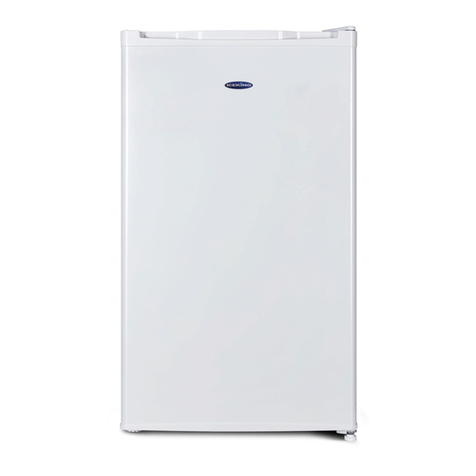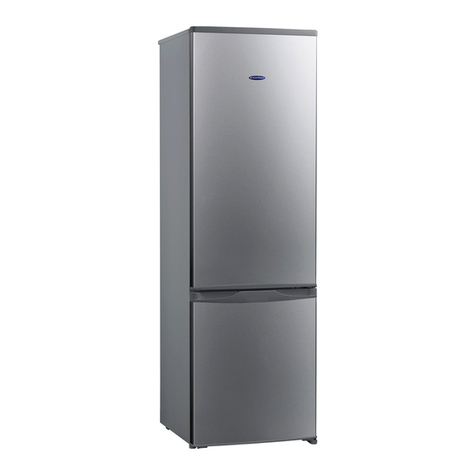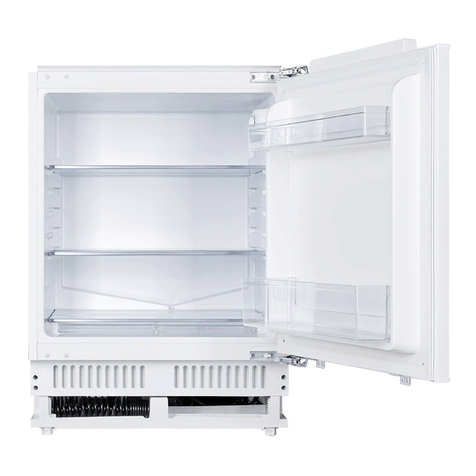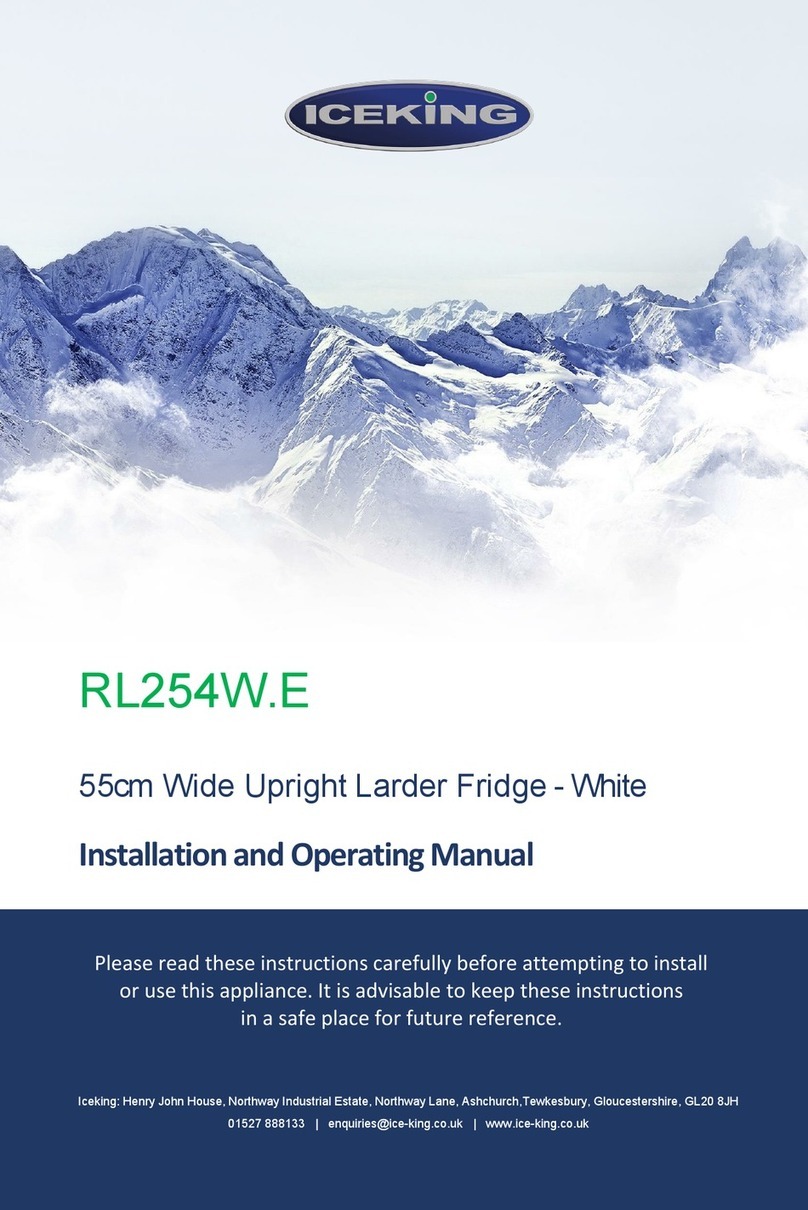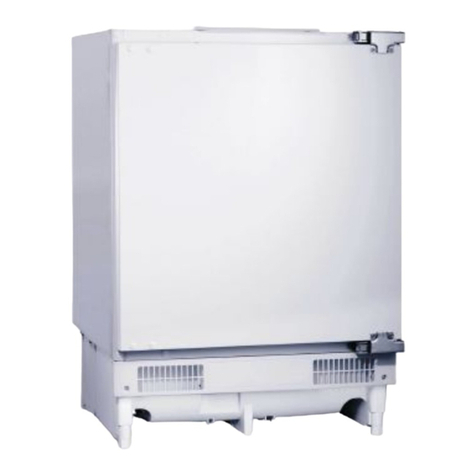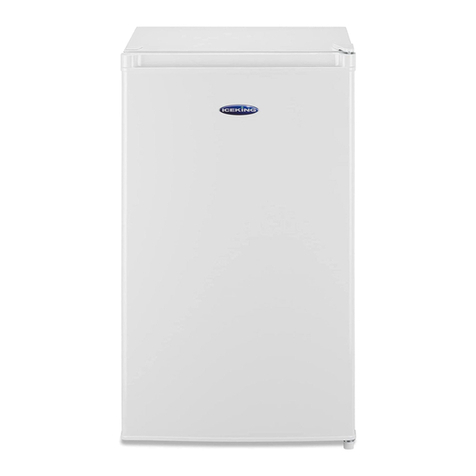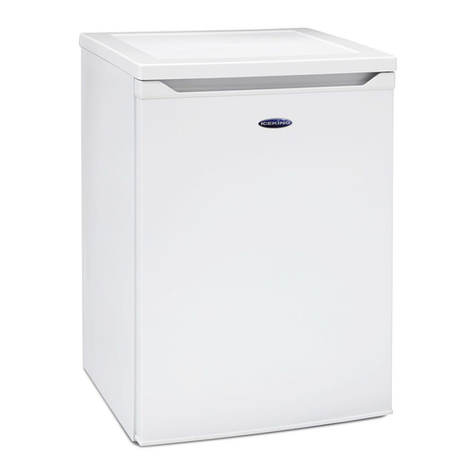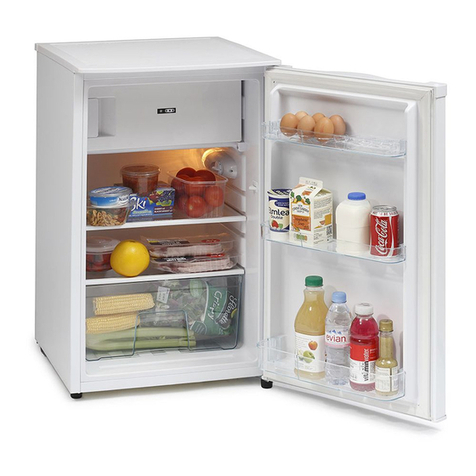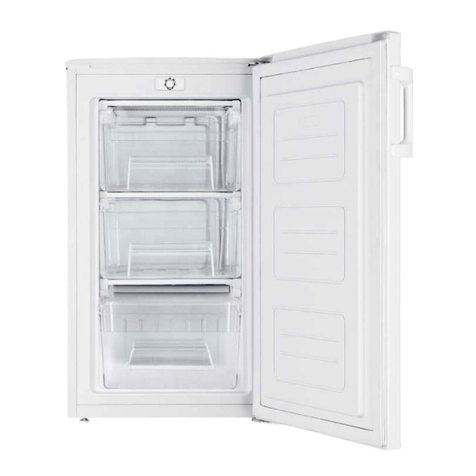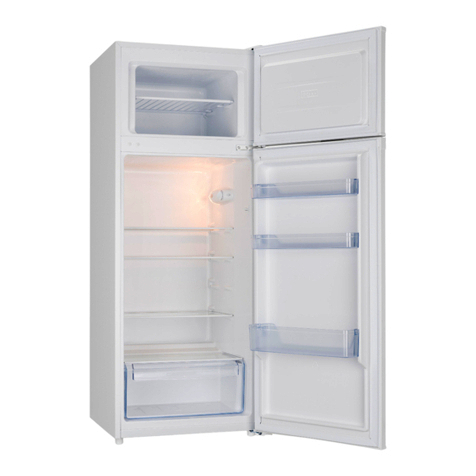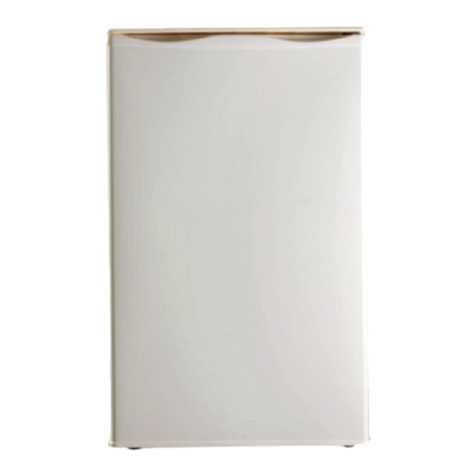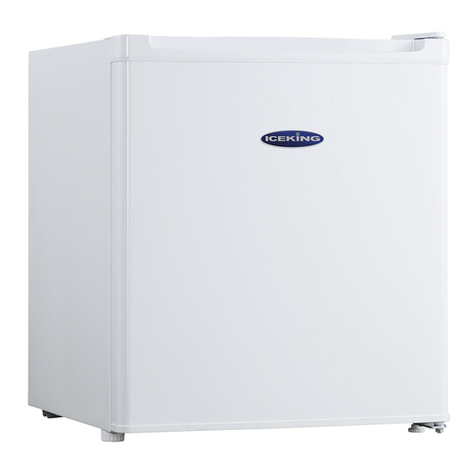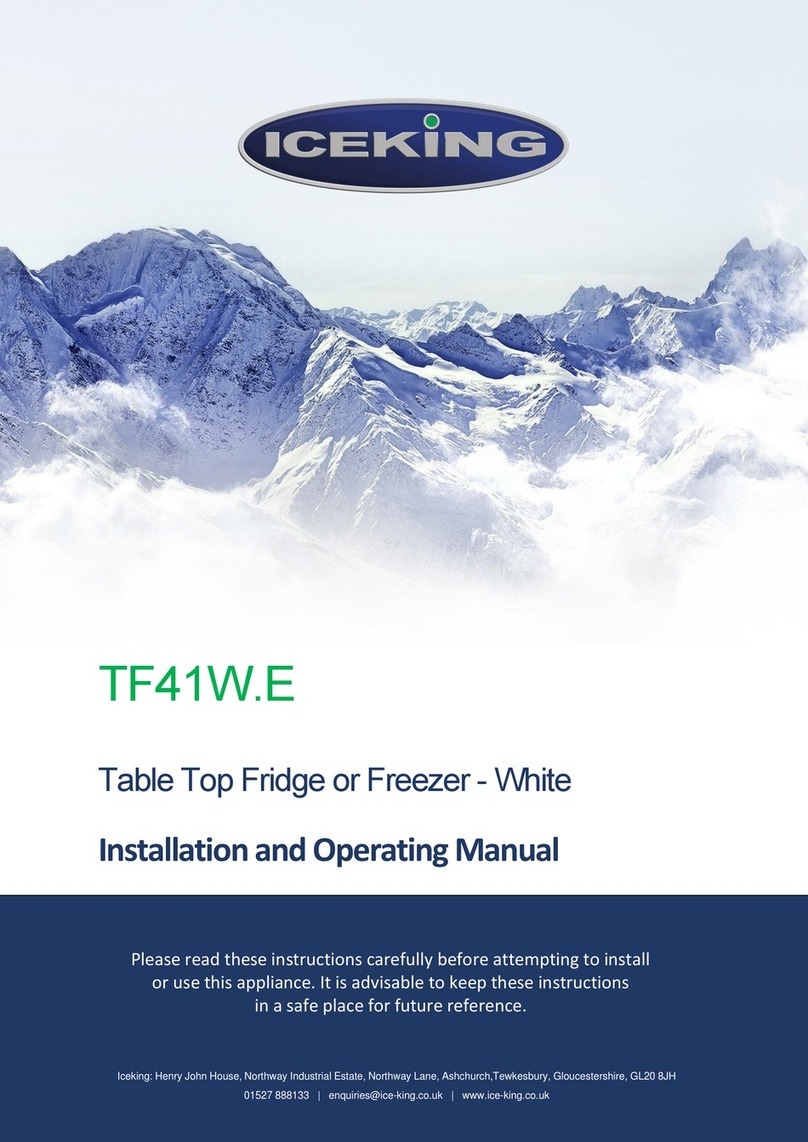
Safety Information
8
Safe Disposal of the Appliance
Freon-free
The freon-free refrigerant (R600a) and the foaming insulation material
(cyclopentane) that is environmentally friendly are used for the refrigerator,
causing no damage to the ozone layer and having a very small impact on the
global warming. R600a is flammable, and sealed in a refrigeration system,
without leakage during normal use. But, in case of refrigerant leakage due to
the refrigerant circuit being damaged, be sure to keep the appliance away
from open flames and open the windows for ventilation as quickly as
possible.
•When disposing of old Refrigeration appliances please follow the below
guidelines:
•Old appliances still have some surplus value. An environmentally
friendly approach will ensure that valuable raw materials are recycled.
•The refrigerants used in your equipment and insulation materials require
special handling procedures. Make sure there is no pipe damage on the
back of the equipment before handling.
•Up-to-date information on the options for disposing of old equipment
and packaging from old equipment can be obtained from the local
municipal office.
•Refrigerant and cyclopentane foaming material used for the refrigerator
are flammable. Therefore, when the refrigerator is scrapped, it shall be
kept away from any fire source and be recovered by a special
recovering company with corresponding qualification other than be
disposed by combustion, so as to prevent damage to the environment or
any other harm.
•When the refrigerator is scrapped, cut off and discard the mains cable,
break off any old locks or latches disassemble the doors, remove
gaskets from door/s and shelves, put the doors and shelves in a safe
place, so as to prevent trapping of children and pets.
WARNING!
During use, service, and disposal of the appliance, please pay attention to
the symbol similar to the one to the side, which is located on the rear of the
appliance (rear panel or compressor) and yellow or orange in colour.
This is the risk of fire warning symbol. There are flammable materials in the
refrigerant pipes and the compressor. Please keep a safe distance between
the appliance and fire sources during use, service, and disposal.
